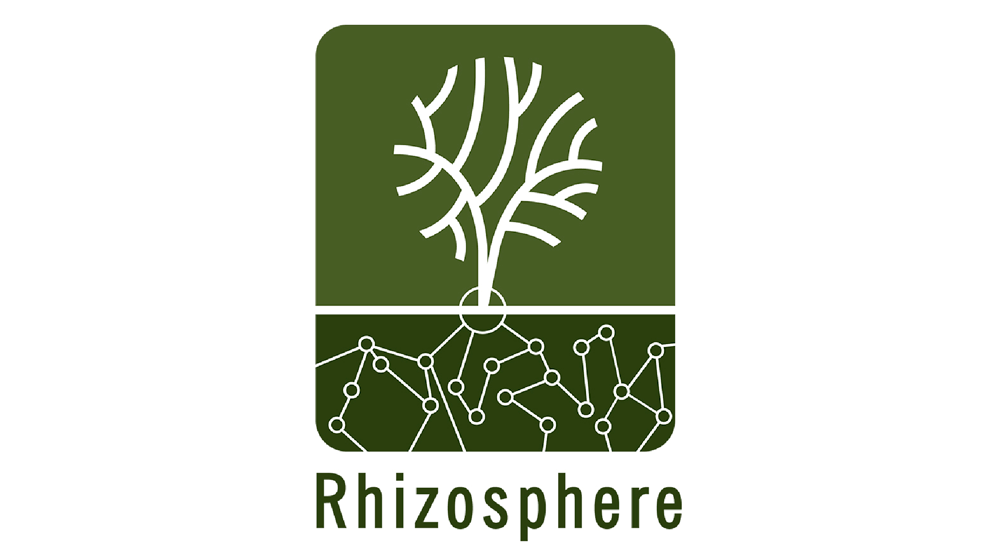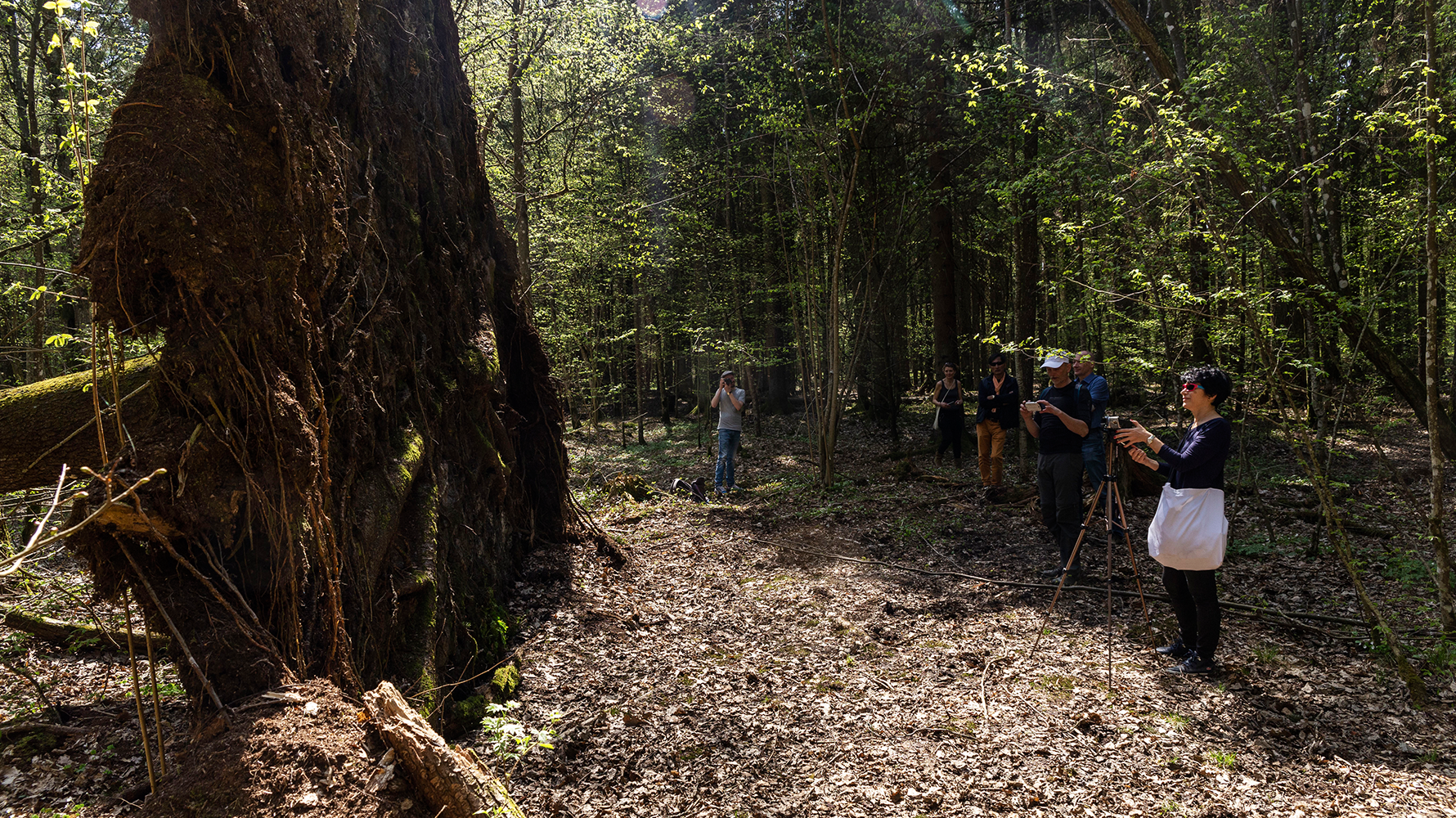ABOUT THE FIELDWORK

In April, 2019, an intensive Rhizosphere fieldtrip took place over a number of days at the Białowieża Forest National Park, a UNESCO World Heritage site in Poland. Working from the Białowieża Geobotanical Station of Warsaw University the Rhizosphere: The Big Network of Small Worlds interdisciplinary working group immersed themselves in the best preserved forest ecosystem of temperate Europe.
RESEARCH CENTER OF WARSAW UNIVERSITY IN BIAŁOWIEŻA

Dr hab. prof Bogdan Jaroszewicz, Head of the Białowieża Geobotanical Station, introduced the Rhizosphere group who were composed of artists, scientists, members of ASN and students from the Studio for Transdisciplinary Projects and Research, Faculty of Artistic Education and Curatorial Studies of the University of Arts (UAP) to a detailed overview of the Białowieża Forest.
Dr hab. prof Bogdan Jaroszewicz’s research covers inter alia: influence of large herbivores on vegetation, frugivory, zoochoric seed dispersal, pollination and the ecology of soil seed banks and he considers how plant-animal interactions interplay in the process of plant migrations and resulting shifts in their range limits within his work. After covering 6,000 years of the Białowieża Forest with his unique insight Dr hab.prof Bogdan Jaroszewicz lead the group through parts of the forest, immersing the interdisciplinary group in the landscapes rich biodiversity.
RHIZOSPHERE: THE BIG NETWORK OF SMALL WORLDS FIELDWORK

Rhizosphere group lead by Prof UAP, Dr hab. Joanna Hoffmann (University of Arts Poznań) and Prof UAM, Dr hab. Władysław Polcyn (Faculty of Biology of the Adam Mickiewicz University in Poznań) researched various parts of the protected 100 sq km within Białowieża Forest National Park gathering valuable data to contribute to the Rhizosphere Project.

Traversing extensive old-growth forest and wetlands, the group documented root systems, dead wood (25% of total volume), thriving linden, hornbeam and ancient oak trees. Participants of the fieldtrip captured film and made photographic documentation of spruce trees ravaged by spruce bark beetles, and diverse flora and fauna that together form a rich carpet of texture and tones – all for a brief time before the forest canopy peaks and limits the access of light to the forest floor.

The group experienced vast stretches of wild garlic, hepatica, golden saxifradge, common toothwort, European wood anemone and Corydalis cava, to name a few of the spectacular spring flowers. Colorful fungi were documented drawing from the 3500 species of fungi found in the park. Some remarkable lichens were also documented out of the 1600 species that flourish as part of the Białowieża Forest’s rich biodiversity.

Variations of the chequered skipper butterfly were encountered in addition to a large number of the 9 species of woodpeckers that inhabit the forest, contributing to the rich soundscape that also includes the Tawny owl as part of the 250 bird species inhabiting the forest. Breeding birds have been monitored for more than 40 years on permanent study plots in oak-hornbeam forests, ash-alder and spruce-pine forests of the Białowieża National Park (Tomiałojć et al. 1984; Tomiałojć, Wesołowski 1994, 1996; Wesołowski et al. 2002, 2006, 2010, 2015).
Białowieża Forest plant species have been flowering two weeks earlier than they used to, something of a global change, as documented by the Research Center of WAM UAM in Białowieża since 1960. Robins arrive one week earlier to the area than they did thirty years ago. Other issues that directly affect the park include decreased groundwater.
Prof UAM, Dr hab. Władysław Polcyn led a workshop on grassroots communities and their unique communication tools. The knowledge over those intra-species underground co-operations empowered the Rhizosphere group to consider their real time encounters of the forest in new ways.
Białowieża Forest National Park
WHY HAS THE BIAŁOWIEŻA FOREST BEEN RECOGNISED AS A UNESCO WORLD HERITAGE SITE?
Białowieża Forest constitutes a primeval forest including both conifers and broadleaved trees covering a total area of 141,885 hectares.
It is home to the largest population of the the iconic species – the European bison – with 900 individuals living in it. Białowieża’s bison population corresponds to 25% of the total world’s bison population.
The region has exceptionally conservation significance due to the scale of its old growth forests, which include extensive undisturbed areas where natural processes are on-going.

Białowieża Forest has a high diversity of fungi and saproxylic invertebrates. Its rich wildlife includes 59 mammal species, over 250 bird, 13 amphibian, 7 reptile and over 12,000 invertebrate species.
The forest area supports complete food webs including viable populations of large mammals and large carnivores (wolf, lynx and otter) amongst others.
The long tradition of research on the little disturbed forest ecosystem and the numerous publications, including a description of new species, also contributes significantly to the values of the forest being listed as a UNESCO World Heritage site.
 READ MORE ABOUT
READ MORE ABOUT
THE RHIZOSPHERE PROJECT
































































